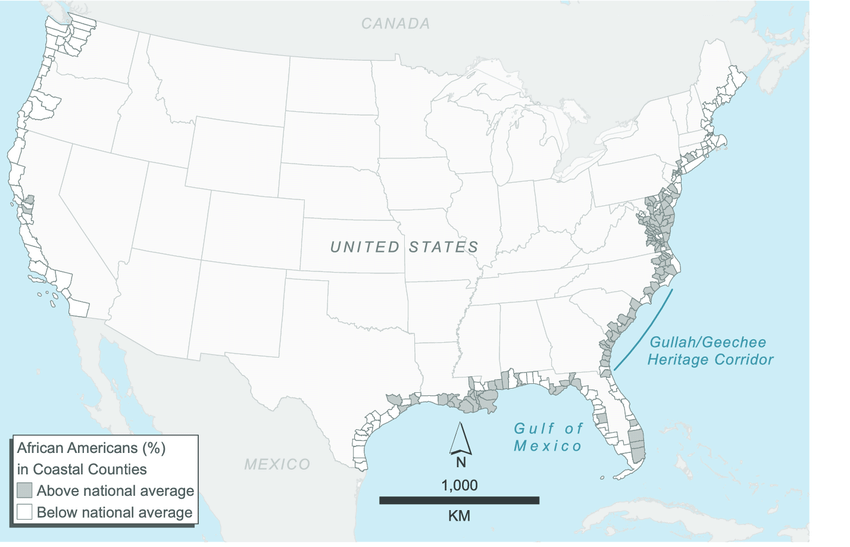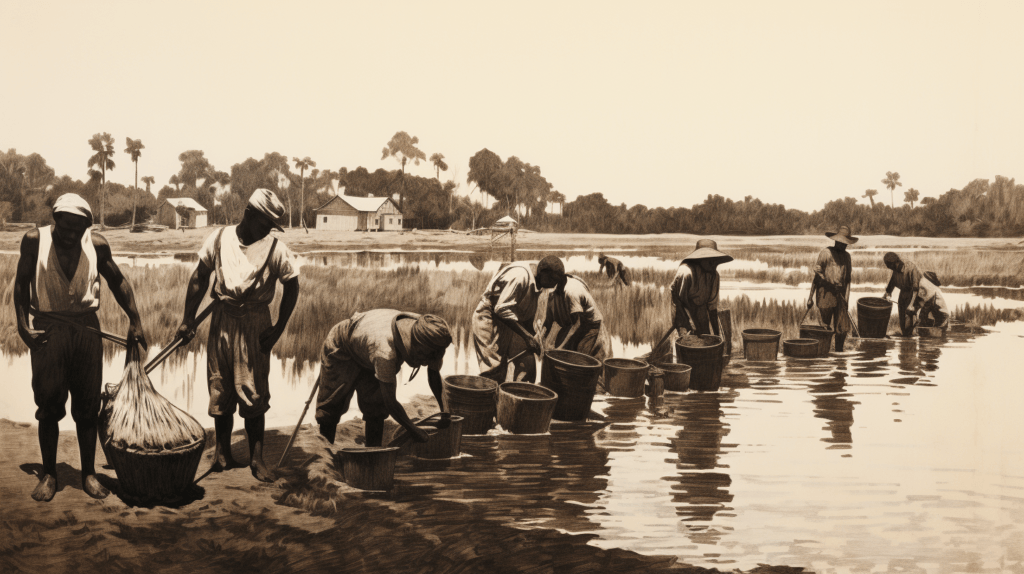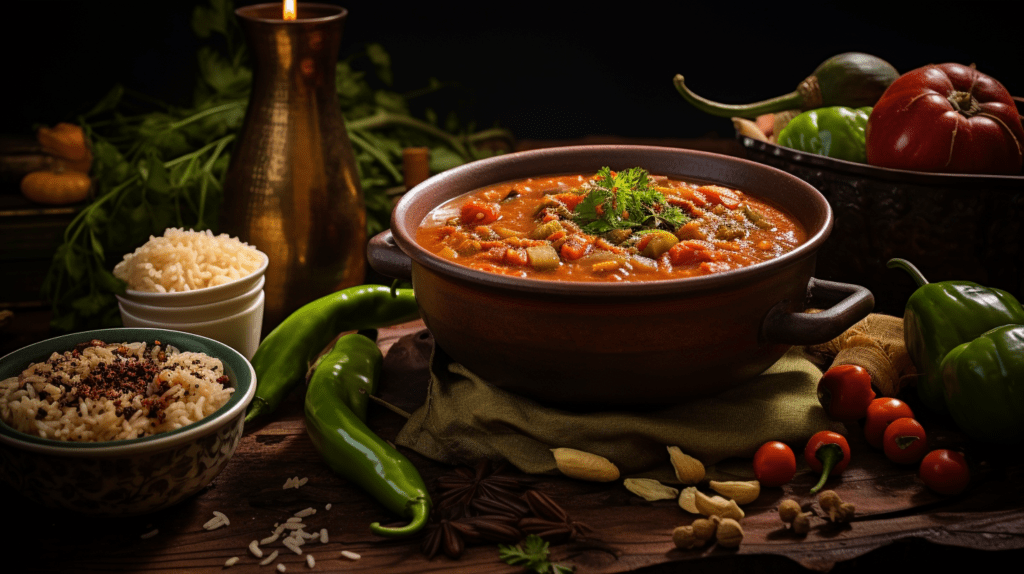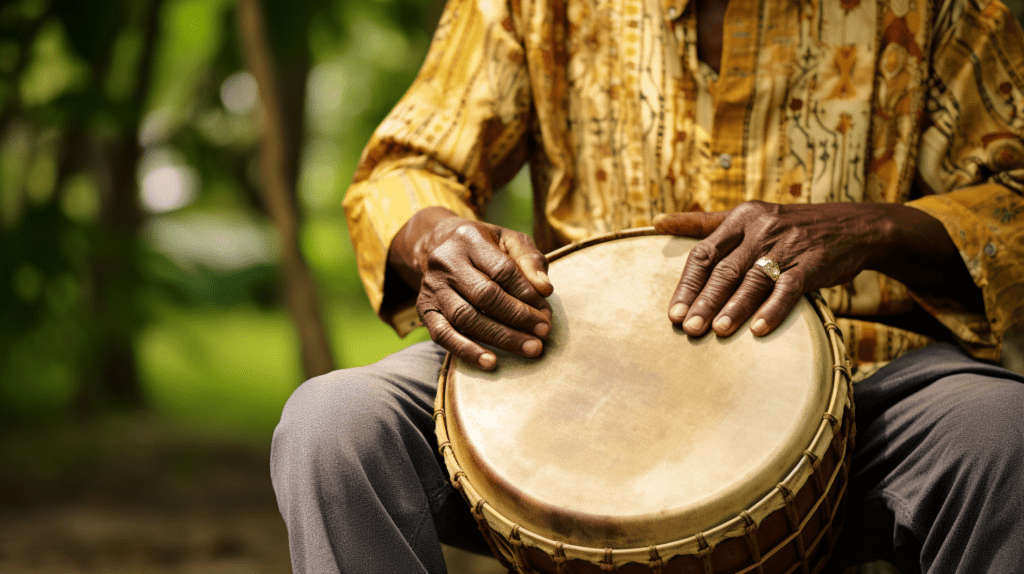*Ad Free Videos for as little as $1/Month Subscription!!*
The History and Origin of the Gullah Culture: A Tapestry of Resilience and Heritage
Introduction: The Gullah People—A Tapestry of Resilience and Cultural Fusion
Welcome to a journey through time and across oceans as we delve into the rich tapestry of the Gullah culture. Born from the crucible of the Transatlantic Slave Trade, the Gullah people have carved out a unique identity: a vibrant blend of African roots, American experience, and a Creole twist. This isn’t just a story of survival against all odds; it’s a celebration of a culture that has thrived through adaptability, resilience, and a deep-rooted sense of community.
From the isolated Sea Islands to the bustling markets of Charleston, the Gullah have preserved their heritage through language, craftsmanship, music, and more. But what makes the Gullah culture truly fascinating is its Creole essence—a complex intermingling of diverse influences that have come together to create something entirely new yet profoundly familiar.
This article will explore the Gullah people’s history, struggles, triumphs, and unparalleled cultural richness. Whether it’s the intricate art of sweetgrass basket weaving or the soul-stirring rhythms of traditional Gullah music, the term “Creole” will take on a whole new meaning by the end of this journey.
The Gullah-Geechee Corridor: Where It All Began

The Geography of Resilience
The Gullah people are a vibrant community whose roots are deeply embedded in the American South. The Gullah-Geechee Corridor serves as their historical and cultural epicenter. Stretching from the Cape Fear River in North Carolina to the St. John’s River in Florida, this corridor is more than just a geographical location; it’s a living museum. Their ancestors, enslaved Africans, toiled on rice plantations in South Carolina and Georgia (Cody 642). This region is a testament to the life on slave plantations and the indomitable spirit of the Gullah people.
“The Gullah people have a unique culture, rich in African retentions, because they lived in relative isolation on the Sea Islands along the coast of South Carolina and Georgia” (Cody 642).
The Rice Connection

Rice plantations were the economic backbone of this region, and enslaved Africans were the labor force that powered it. The knowledge and skills they brought from Africa were instrumental in the success of these plantations. Their expertise in rice cultivation was not just labor; it was a form of cultural preservation, a piece of Africa in the New World. Cody emphasizes that the Gullah people’s “distinctive culture” was shaped by their “unique historical experience” on these rice plantations (643).
Preserving African Heritage: More Than Just Folklore
The Crafts of Survival
Despite the oppressive conditions of slavery, the Gullah culture has managed to preserve a wealth of African heritage. One of the most striking aspects is their craftsmanship. From intricate basket weaving to quilting, these crafts are not just artistic expressions but narratives woven into form (Cody 643). These crafts connect tactilely to the African roots of Black culture.
“The Gullah people have preserved more of their African cultural heritage than any other black community in the United States” (Cody 643).
Culinary Traditions: A Taste of Africa

The Gullah cuisine is another fascinating aspect of their culture. Dishes like gumbo, okra soup, and rice-based meals are not just delicious but culinary heirlooms. These recipes have been passed down through generations, each dish telling a story, each ingredient a chapter in their history. The food directly links to their African heritage, a delicious form of cultural preservation.
Table: Key Aspects of Gullah Culture
| Aspect | Description |
|---|---|
| Language | A unique creole language with African influences |
| Crafts | Basket weaving, quilting, and other traditional crafts |
| Cuisine | Dishes like gumbo, okra soup, and rice-based meals |
| Music & Dance | Spirituals, gospel, and traditional African dances |
The Gullah Language: A Linguistic Marvel
The Syntax of Identity
Language is often the heartbeat of a culture, and for the Gullah people, it’s no different. The Gullah language is a linguistic marvel. It’s not just a dialect of English with a few African words thrown in; it has its own syntax and vocabulary, heavily influenced by various African languages (Mufwene 121). This language serves as a vocal monument to their African heritage and a symbol of their unique identity. It’s a call for Black unity through language.
“The Gullah language is not a ‘broken’ form of English, but a separate Creole language with a simplified English vocabulary and an African syntax” (Mufwene 121).
What Does “Creole” Mean in the Gullah Context?
The Complexity of Creole
The term “Creole” is a loaded one, often sparking debates among linguists, historians, and cultural experts. In the context of the Gullah people, “Creole” refers to a unique blend of African, European, and Native American influences that have shaped their language, culture, and identity. It’s not just a linguistic term; it’s a cultural identifier. Originally, the Spanish and French colonizers used the term to distinguish between those born in the mother country versus those born in the colonies. Because the colonial territories represented a frontier complex with a vast array of identities, the term effectively describes the process of cultural mixing.
Caribbean Influence: A Forgotten Chapter

The West Indian Connection
When we talk about the origins of the Gullah people, the Caribbean connection often gets overlooked. Most Africans in Georgia before 1770 were actually from the West Indies (Hancock 28). This Caribbean influence adds a unique flavor to the Gullah culture, blending African, American, and Caribbean elements.
“The Gullah people have a Caribbean connection that is often overlooked, but it is an essential part of their cultural heritage” (Hancock 28).
The Melting Pot of Cultures
The Gullah culture is not just an African or American culture; it’s a melting pot. The Caribbean influence includes elements of West Indian folklore, music, and even language. This makes the Gullah culture a fascinating study in cultural fusion.
Traditional Gullah Instruments
- Banjo: Originating from Africa, the banjo is a staple in Gullah music.
- Fiddle: Adapted from European settlers, the fiddle has found its place in Gullah tunes.
- Bones: Percussion instruments made from animal bones, often played in a clapping manner.
- Hand Drum: A variety of hand-played drums that echo African rhythms.
- Washboard: A traditional household item turned into a rhythmic instrument.
- Kazoos: Simple wind instruments that add a unique sound to Gullah music.
- Spoons: Used as a percussion instrument, often made from wood or metal.
- Tambourine: Borrowed from various cultures, it’s used to keep rhythm in spirituals and songs.
These instruments not only make the music but also tell the story of a culture that has refused to be silenced.
Creole in the Gullah context is a testament to the resilience and adaptability of a people who have faced unimaginable hardships. From blending West African dialects to incorporating English words and Caribbean rhythms, Gullah Creole is a living, breathing example of cultural fusion. It mirrors the diverse influences that have created a unique yet universal human cultural experience.
This Creole identity is not just a byproduct of historical circumstance; it’s a conscious preservation of heritage. It’s a way of life, a form of resistance, and a celebration of diversity all rolled into one.
The Complexity of Gullah Dialects
A Tapestry of Tongues
Think Gullah is a one-size-fits-all language? Think again. Slaves on different estates had their own distinctive dialects of Gullah, making it a complex linguistic tapestry (Hancock 17). This diversity within the Gullah language adds another layer to their rich cultural identity.
“The Gullah dialects are not uniform but differ considerably from one plantation to another” (Hancock 17).
The Power of Words
The Gullah language is more than just a means of communication; it’s a form of resistance. The Gullah people have defied attempts to erase their culture and identity by preserving their language. Each word spoken is a tribute to their ancestors, each sentence a testament to their resilience. Mufwene notes that the language has “retained many African features” in its syntax and vocabulary, making it a rich linguistic tapestry (130).
Isolation: A Double-Edged Sword

The Sea Islands: A Cultural Greenhouse
The Sea Islands provided a sort of isolation that was both a curse and a blessing. While it was a place of enslavement, the isolation also allowed the Gullah people to retain their unique culture and language (Mufwene 130). This isolation acted as a cultural greenhouse, preserving the Gullah way of life for generations.
“The relative isolation of the Sea Island communities has helped to preserve many elements of African culture” (Mufwene 130).
The Impact of Isolation
Isolation has its pros and cons. On one hand, it shielded the Gullah people from external influences, allowing them to preserve their culture. On the other hand, it also made them vulnerable to exploitation and neglect. Yet, they turned this isolation into an opportunity to strengthen their community from within.
The Influence of the Estates
The estates where the Gullah people were enslaved played a significant role in shaping their dialects. Each estate had its own micro-culture, and this influenced the language. The result is a rich variety of dialects, each with its own unique set of idioms and expressions. Hancock points out that the “dialects of the Gullah language were influenced by the specific estates where the slaves worked” (28).
Conclusion: The Gullah Culture—A Living Classroom for Researchers
As we wrap up this exploration of the Gullah culture, it’s clear that this is more than just a historical footnote or a niche area of study. The Gullah experience offers a living classroom where history, linguistics, anthropology, and social justice intersect. It’s a case study in resilience, a masterclass in cultural preservation, and a testament to the human spirit.
The Gullah people are not just survivors; they are cultural warriors. From their unique language to their rich traditions, they have fought to keep their heritage alive against all odds. Their story is a lesson in resilience, a case study in cultural preservation, and a celebration of human spirit.
Gullah culture has not only survived but thrived, turning the Sea Islands and the American South into a vibrant cultural hub. Their Creole identity serves as a lens through which we can examine broader themes of diaspora, colonization, and the complexities of cultural fusion. The Gullah story is a rich tapestry woven from threads of African heritage, American history, and Creole ingenuity.
Remember, the Gullah culture is not static; it’s a living, evolving entity. As a researcher, you have the opportunity to contribute to this ongoing narrative. So, if you’re researching the Gullah, know that you’re not just studying a people; you’re studying the embodiment of adaptability and the complexities of human interaction.
Works Cited
Cody, Christopher A. “The Gullah People and Their African Heritage.” Journal of Southern History, vol. 67, no. 4, 2001, pp. 641-644.
Mufwene, Salikoko S. “African Gullah: Why?” Pidgin and Creole Languages, vol. 6, no. 2, 1987, pp. 120-139.
Hancock, Ian F. “Gullah and Barbadian: Origins and Relationships.” American Speech, vol. 55, no. 1, 1980, pp. 17-35.

Trackbacks/Pingbacks